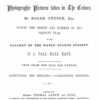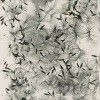
Peter H. Hoffenberg, “The Official Opening of ‘The Exhibition of the Photographic Pictures taken in The Crimea by Roger Fenton, Esq.'”
The first public exhibition of war photographs opened in London in late September 1855, during the costly and controversial Crimean War. The show introduced over 300 black and white images taken by well-known photographer Roger Fenton (1819-1869) and continued with various additions over the next several months in Britain. Later host cities included Manchester, Birmingham, and Belfast. Queen Victoria and Prince Albert were the leading sponsors of the shows. The first exhibition was well chronicled at the time, and this essay reviews some of those public contemporary responses, published primarily in major newspapers and periodicals, as well as in photographic society journals. Those responses are considered in light of the history of photography, mid-Victorian matters of art, science and war, and common conclusions at the time and that the show was primarily a work of propaganda to support the Crimean War and that Fenton’s images were not realistic.

Andrea K. Henderson, “William Henry Fox Talbot: The Photograph as Memorial for Romanticism”
This essay argues that William Henry Fox Talbot’s invention of the negative-positive photographic process was facilitated by the fact that he conceived of his historical moment as one in which the ideals of Romanticism, while still attractive, were becoming increasingly untenable. Talbot found the Romantic conception of the poet as the archetypal artist deeply compelling, but he feared that he and other men of his generation might be unequal to the task of artistic creation as it was theorized and practiced by late-Romantic poets like Shelley and Byron. Talbot addresses this anxiety in a poem of his own, “The Magic Mirror,” in which he explores the possibility that a special device might preserve a poetic account of nature in the form of a visual image. For Talbot, such a technology would of necessity fall short of Romantic ideals, being an externalized manifestation of poetic power—a tool to hand rather than an inspired voice within. At the same time, he understood that it would be possessed of a magic of its own in its capacity to revive a Romantic vision of nature. This conception of the visual image as (inadequate) memorial to a poetic ideal actually empowered Talbot by enabling him to tolerate the tendency of his early experimental photographs to darken or fade, and it prompted him ultimately to produce photographs whose melancholy character constitutes an important part of their extraordinary beauty.
